Traditional Russian Clothing is a window into the cultural heritage of Russia, shaped by climate, religion, royalty, and war. Every stitch carries stories of identity, struggle, and pride. Today, this attire speaks to both the past and present, mixing Slavic fashion trends with modern flair.
From fur hats to colorful gowns, these outfits are more than fabric. They are part of the Russian folk traditions, deeply rooted in Russian history and fashion. You will discover how these garments came to life, what they meant, and how they continue to inspire new generations.
Origins and Historical Evolution of Russian Clothing
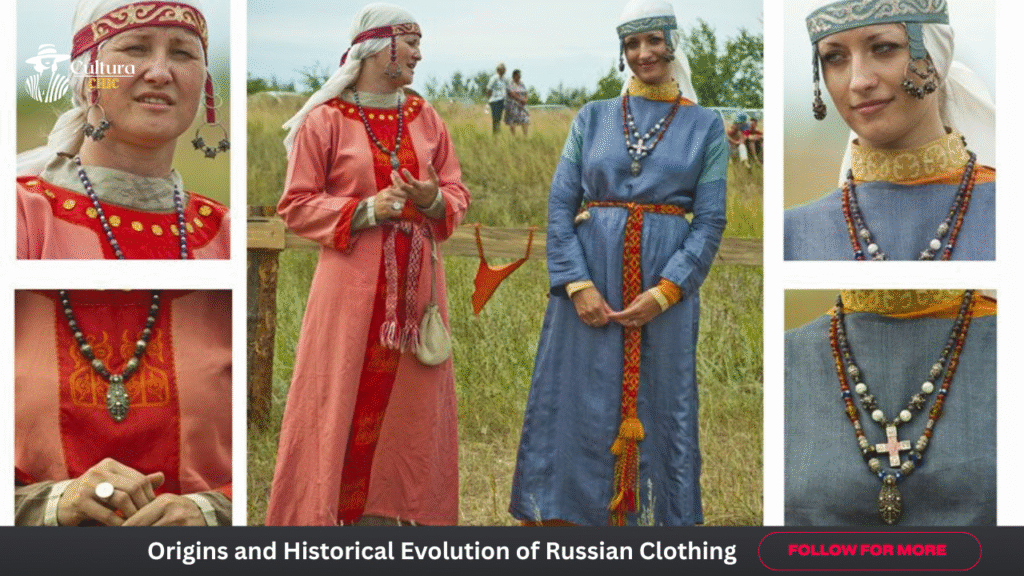
Clothing in Russia has always reflected its history. What Russians wore in the 1800s showed not just style, but survival. In early times, people wore wool and linen garments to stay warm. Fur was used to line coats and hats during icy winters. These historical garments of Russia were made by hand and passed down.
The Byzantine influence on clothing brought elegance and color, especially in the robes worn by nobility. Later, the influence of Peter the Great on fashion changed everything. His reforms introduced Eastern European dress history and Western trends to Russia. Over time, traditional dress became tied to identity, especially in rural life.
Traditional Russian Clothing for Women
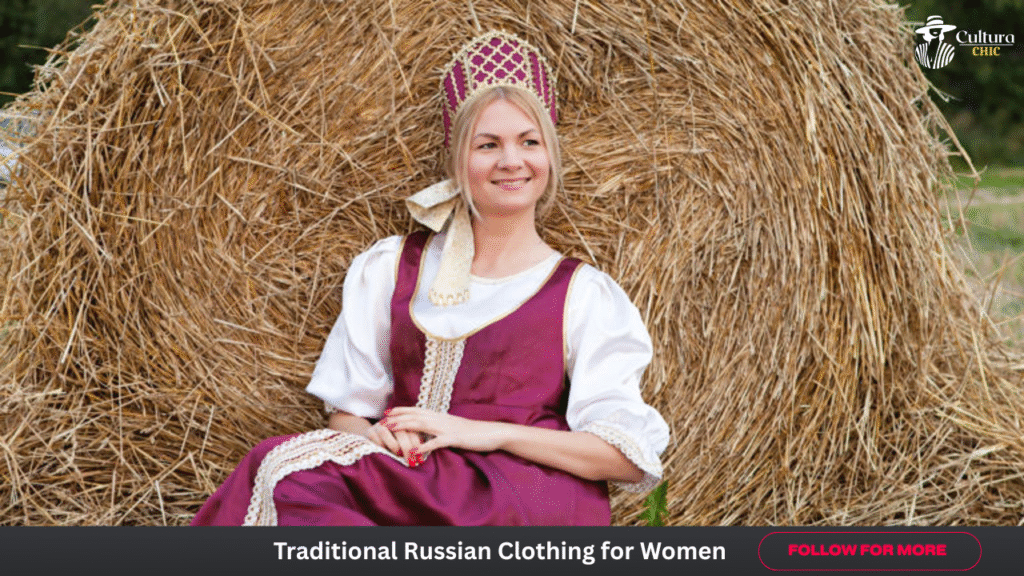
Women’s attire in Russia was full of color and meaning. A traditional Russian female costume often included the Russian sarafan dress, worn over embroidered blouses. The kokoshnik headdress, decorated with pearls or gold, showed beauty and class. These garments marked stages in life, such as girlhood, marriage, and motherhood.
The noblewomen’s attire used brocade and velvet fabric, showing status. In contrast, peasant women wore simpler styles made from ethnic fabric Russia like cotton or linen. The feminine folk dress reflected modesty and tradition. Many believed how Sarafan represents modesty mattered deeply in rural life.
Key Garments in Women’s Attire
The Russian bridal wear included bright gowns, ornamental lace clothing, and rich colors like red, symbolizing love and beauty. A table of key items:
| Garment | Meaning |
| Sarafan | Modesty and femininity |
| Kokoshnik | Status and grace |
| Embroidered blouse | Cultural story and pride |
| Shawls and aprons | Regional identity |
Traditional Russian Men’s Attire and Design
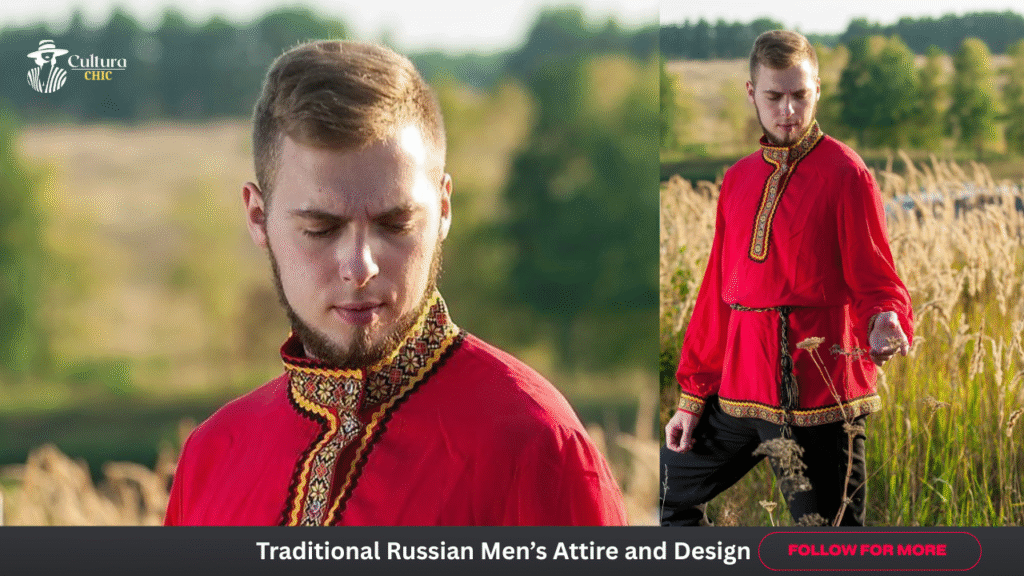
Men wore clothing that showed purpose and pride. A Kosovorotka shirt had a side button and was worn daily. The Russian caftan was a long coat for colder months. These men’s folk costumes Russia reflected honor and regional style.
In the countryside, men’s peasant clothing in old Russia included boots, wide belts, and fur-lined hats Russia. Ushanka hat men wore in freezing climates was not just a style, it had real use. The function of Ushanka in cold climate made it essential.
Evolution of Men’s Dress
Many male traditional outfits changed over time, but the key idea stayed the same—comfort with respect. These garments were made of materials used in Russian attire like flax, fur, or wool.
Royal Court Fashion and Aristocratic Styles
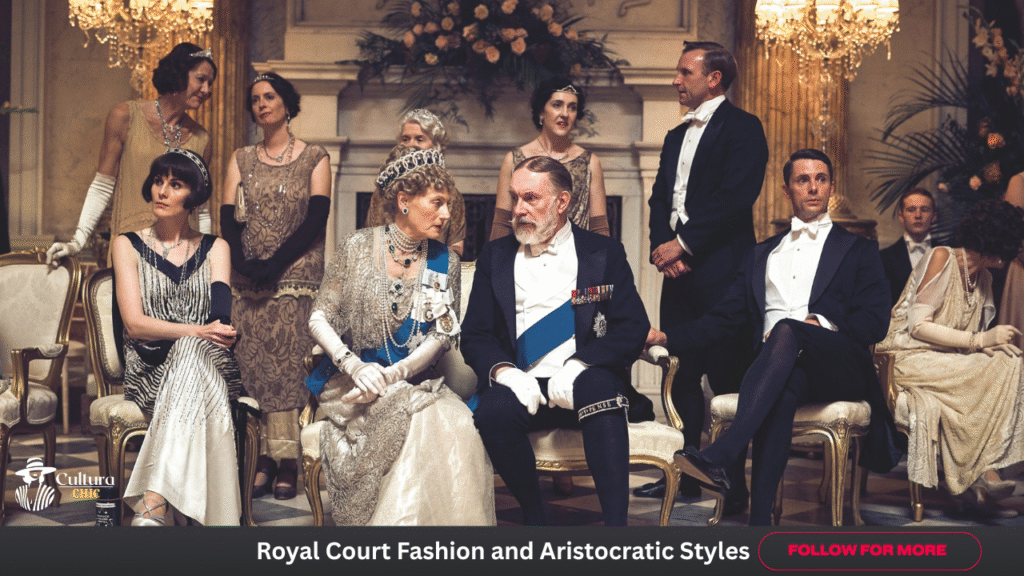
The Tsarist era fashion showed extreme wealth. Royals wore golden robes, heavy cloaks, and crowns. Their clothes had deep meaning, often tied to religion or power. Silk, fur, and jewels told the world who they were. These were not everyday garments—they were symbols.
Russian ethnic attire in court followed a strict code. The look had to match the wearer’s rank. These styles included heavy embroidery, bold patterns, and rich textures. The symbolic meaning of colors in folk dress mattered. Red for beauty. Gold for heaven. Purple for royalty.
Nobility vs. Peasantry
Where noblewomen’s attire sparkled with gems, peasant men’s wear stayed practical. The difference showed how clothing marked class. This divide is a major part of ethnic diversity in Russian clothing.
Popular Vintage & Iconic Russian Garments
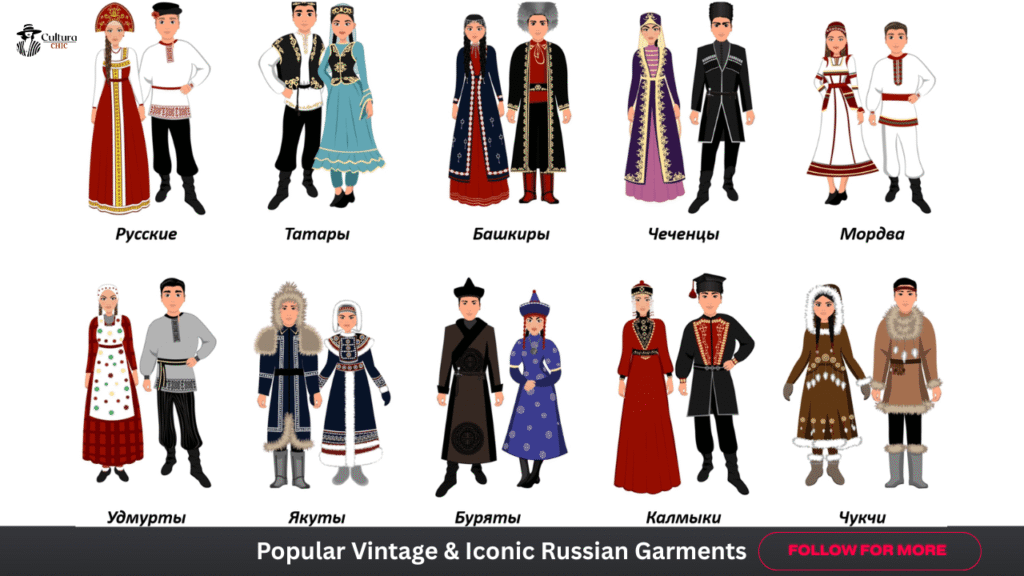
Some garments became legends. The Sarafan is still worn during Russian folk festivals. The Valenki boots, made of felt, keep feet warm in deep snow. Bast shoes (Lapti) were worn by peasants working fields. The Pavlovo Posad shawl is famous for its bright, Russian floral designs.
Another example is the Russian gored dress, known for its wide hem and fine stitches. These outfits show how preserving cultural dress keeps stories alive. Today, they’re worn during plays, dances, and national events.
Heritage Preserved in Fabric
Each piece holds history. From the Russian sashes and belts to the embroidered edges, everything has a meaning. The table below lists these iconic garments:
| Garment | Use |
| Valenki | Winter warmth and utility |
| Lapti | Field work and simplicity |
| Gored Dress | Women’s celebration wear |
| Shawls | Beauty, tradition, and warmth |
Regional Variations Across Russia
Different regions wore different styles. In the north, the Northwestern Russian costume used Slavic patterns and wool. Southern Russian garments used bright silk, lace, and ribbons. Tatar dress traditions in the Volga region attire added gold thread and unique headpieces.
Siberian fur fashion stood out for its layers. These traditional Siberian wear pieces handled cold better than any coat. These changes show the real ethnic diversity in Russian clothing, shaped by the land.
Dress Across Russia’s Vast Terrain
The rural vs urban clothing Russia also mattered. Cities followed fashion faster, while villages held onto old styles. These regional folk dresses helped people share who they were and where they were from.
Patterns, Symbols, and Colors in Russian Dress
Design told stories. Traditional embroidery motifs often showed protection, faith, or love. Folk art patterns like birds, flowers, or stars filled sleeves and hems. These shapes had roots in old myths and daily life.
Colors were loud on purpose. The red and gold in Russian clothing stood for boldness and beauty. Nature-inspired motifs gave each dress life. The vibrant cultural colors helped people stand out and feel proud.
Weaving Stories into Thread
These were not just decorations. They were messages. The patterns on a dress told stories without words. It was history you could wear.
Accessories in Traditional Russian Fashion
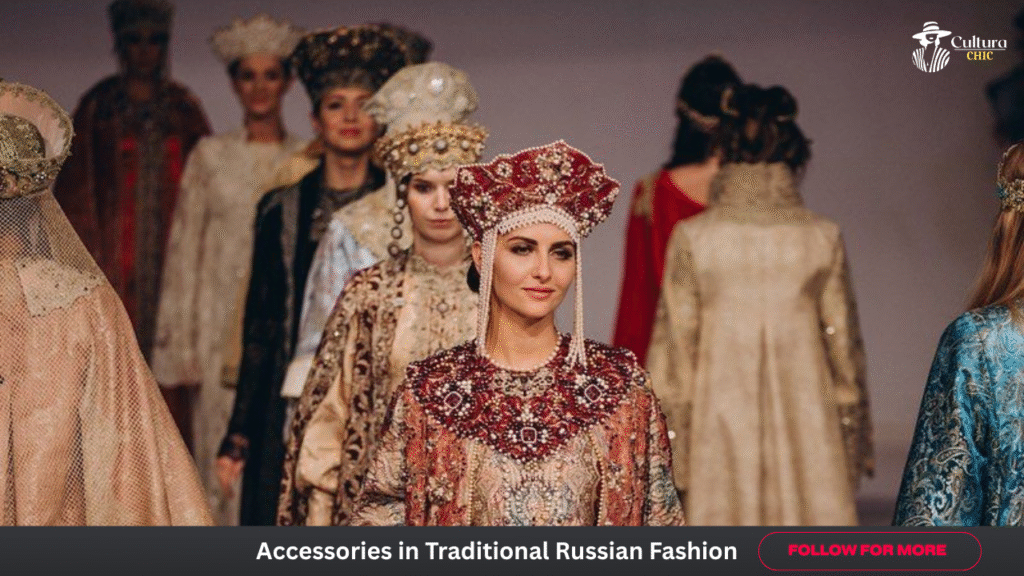
Without accessories, the look was incomplete. Women wore the kokoshnik headdress or simple kerchiefs. Men tied wide sashes called poyas around the waist. These were both stylish and useful. Shawls, often handmade traditional attire, were gifts passed down.
The accessories in Russian national costume also included jewelry, pins, and woven bags. Each piece held a place in weddings, harvest festivals, or church days. They completed the story the outfit began.
Function Meets Beauty
Some items, like fur-lined hats Russia, did more than decorate. They kept the cold out and the warmth in. Beauty met purpose.
Cultural Importance and Modern Revival
Today, you see traditional dress revival in parades, dances, and theater. People wear these styles during Russian national holidays and cultural shows. In the USA, Russian communities share them with pride at events and exhibits.
Young designers now mix these styles with modern fashion. They use modern adaptation of vintage styles to keep the past alive. It’s not just clothing. It’s connection. A way to say, “This is who we are.”
Living Traditions
From Russian folk embroidery to dramatic coats, these clothes still matter. They link generations across oceans and time.
Final Thoughts
Traditional Russian Clothing carries more than color or cloth. It holds history, pride, and meaning. From snowy Siberia to sunny Volga, these clothes tell us who Russians were—and who they still are today.
————— Read More —————
FAQs About Traditional Russian Clothing
Q: What are traditional Russian clothes?
These include the Russian sarafan dress, Kosovorotka shirt, Valenki boots, and more.
Q: When was traditional Russian clothing worn?
Mainly before the 20th century, but still during holidays and cultural events.
Q: What materials were used in Russian folk clothing?
Commonly wool, linen, fur, and cotton.
Q: Why do Russians wear fur hats?
The function of Ushanka in cold climate made it perfect for Russian winters.
Q: Is traditional dress still worn today?
Yes, especially at festivals and by artists.
Welcome to Cultura Chic! I’m CHAUDHARY ALI, an AI-Powered SEO, and Content Writer with 2 years of experience.
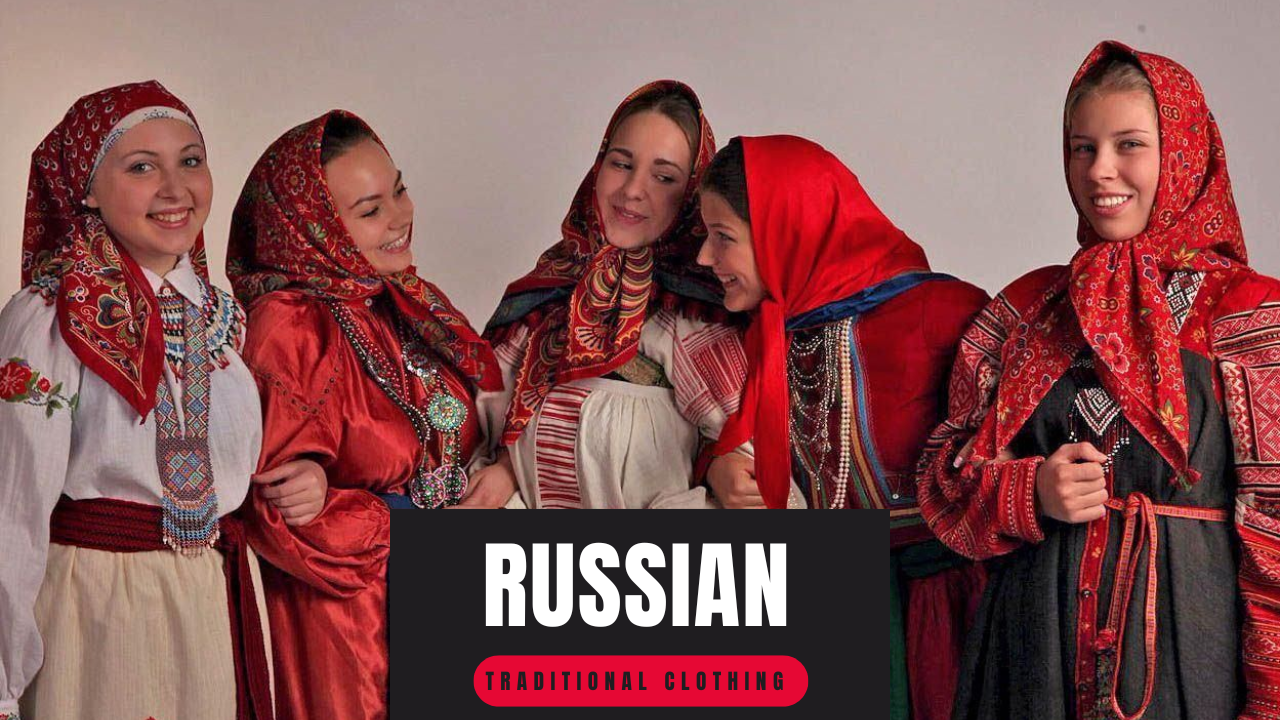
1 thought on “Traditional Russian Clothing”